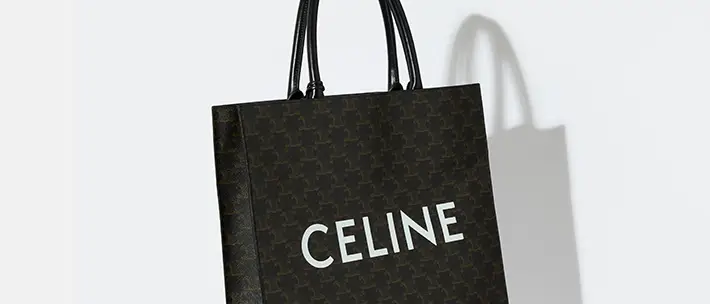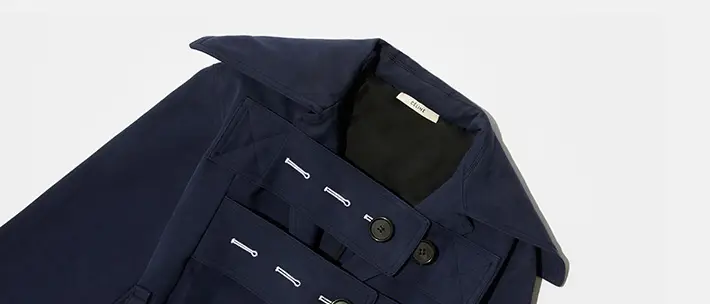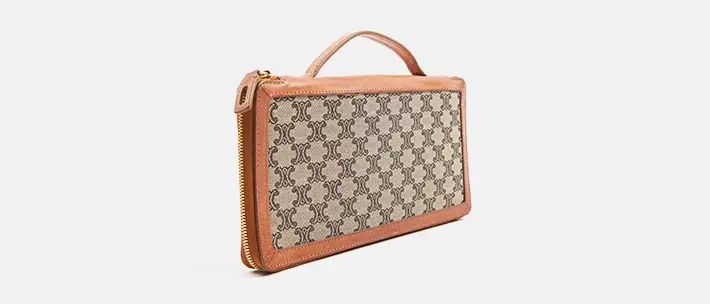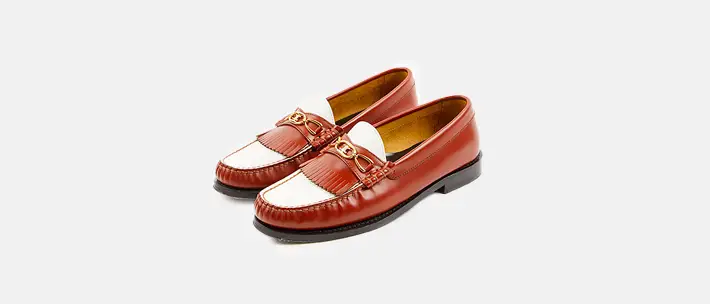Céline: a minimalist, functional wardrobe.
Céline champions the concept of a wardrobe that is functional, simple and stylish. It is Céline who modernised denim canvas and moccasins, and every single one of its handbags have become genuine It bags. The creator and founder of the label, Céline Vipiana, began with an offering of comfortable but feminine pieces with subtle designs, thus allowing a plethora of possible combinations.
The marriage of style and comfort.
In 1945, Céline Vipiana opened a shop selling made-to-measure shoes for children, choosing a red elephant as its mascot. The shop's success within a very short space of time led her to design models for women, such as the Polo moccasins. In 1960, she broadened her shoe collection even further and developed a range of accessories and leather goods. Four years later, the designer and her husband launched the label's fragrance: Vent Fou. It was 1967 before Céline's first ready-to-wear line appeared: "Sportswear Couture", which focussed on suits knitted skirt-shirt, and culotte-skirts.
If the brand's first logo drew on Céline Vipiana's passion for horses - a carriage known as an American sulky, she finally decided to revisit her logo in 1973, inspired by the links of a chain to be found around the Arc de Triomphe, she settled on the double "C" we are familiar with today. In 1997, Michael Kors took over creative direction and decided to develop the line of handbags. Elegant and practical, his designs quickly became It bag popular, and are coveted by numerous celebrities. Amongst pieces attaining cult status, there were the Boogie handbag and the Poulbot handbag. Today, the brand is coveted both for its ready-to-wear collections and its leather goods, from the SoHo district in New York to the Plaza 66 complex in Shanghai, some 140 boutiques are spread over the five continents.
Céline, LVMH's new recruit.
At the heart of the Céline fashion house, successive creative directors have developed the brand's style collection after collection. When he arrived in 2004, Roberto Menichetti proposed clean, sensuous cuts before Ivana Omazic took over a year later and restored the original sportswear vibe. After the 2008 takeover by LVMH, world number 1 in all-things luxury, designer Phoebe Philo was named as creative director, and revived the chic minimalist style reminiscent of the company's beginnings. The many different models of handbags she has designed for the brand have made a major contribution to the renown currently enjoyed by Céline, especially the Trapèze bag, recognisable by its wings that can be tucked in. Céline is also synonymous with muses who perfectly embody the spirit of the brand - a subtle blend of strength and fragility, of elegance and a natural look. After Daria Werbowy and octogenarian Joan Didion, Céline's new muse is Karly Loyce from Martinique.
The collections of accessories and ready-to-wear are still influenced by radical minimalism, a recurrent theme of this particular fashion house. Amongst the iconic pieces, it’s necessary to mention:



